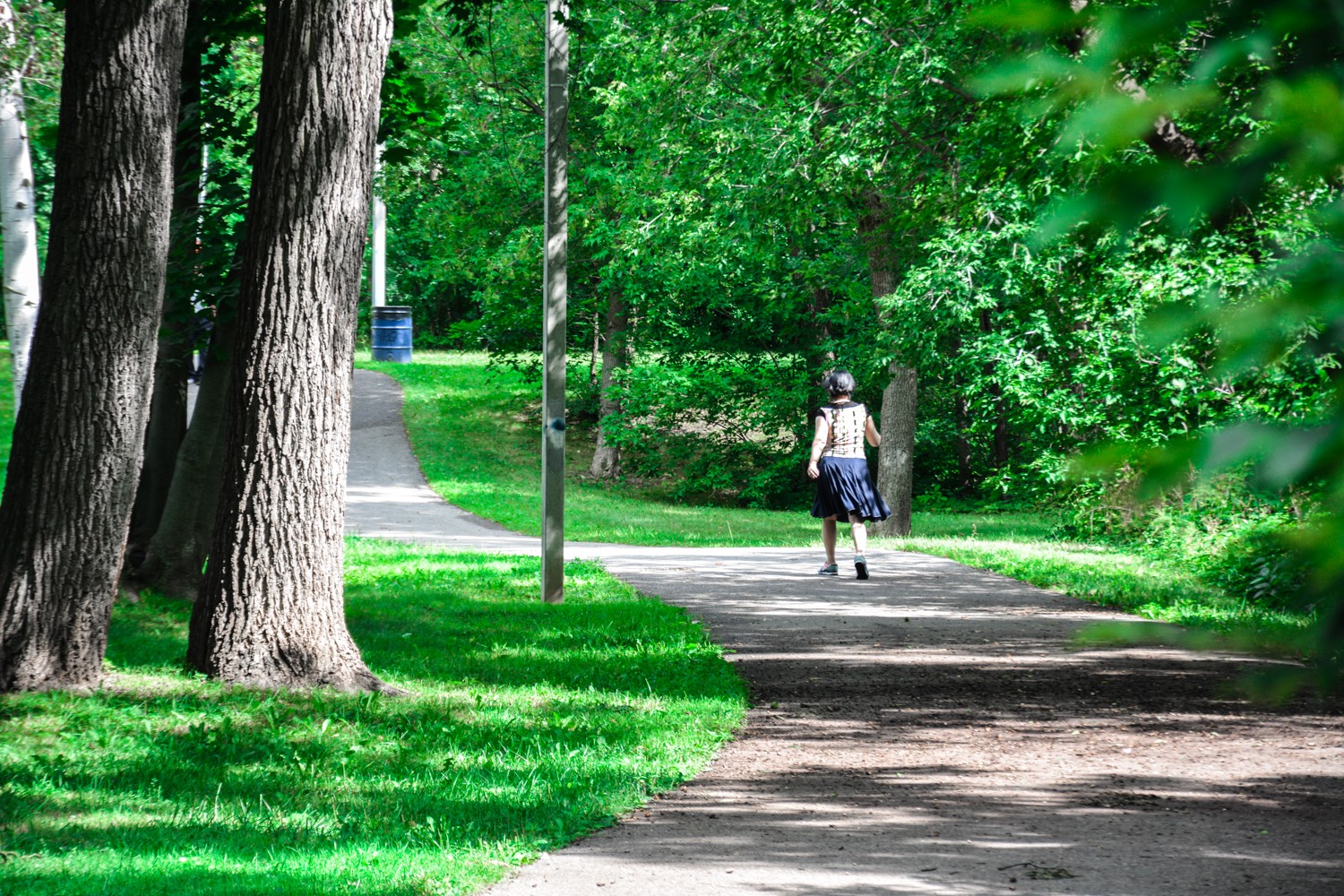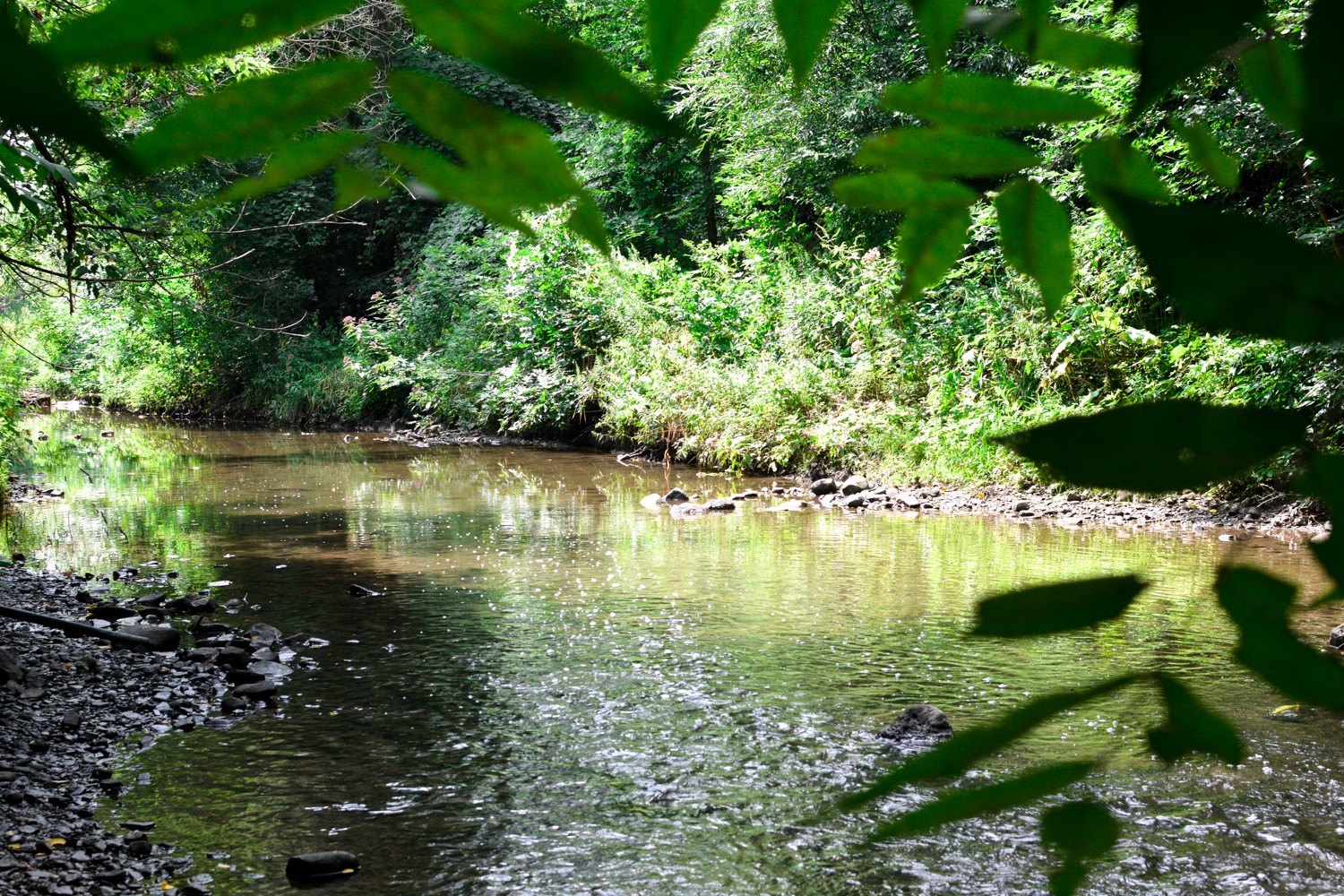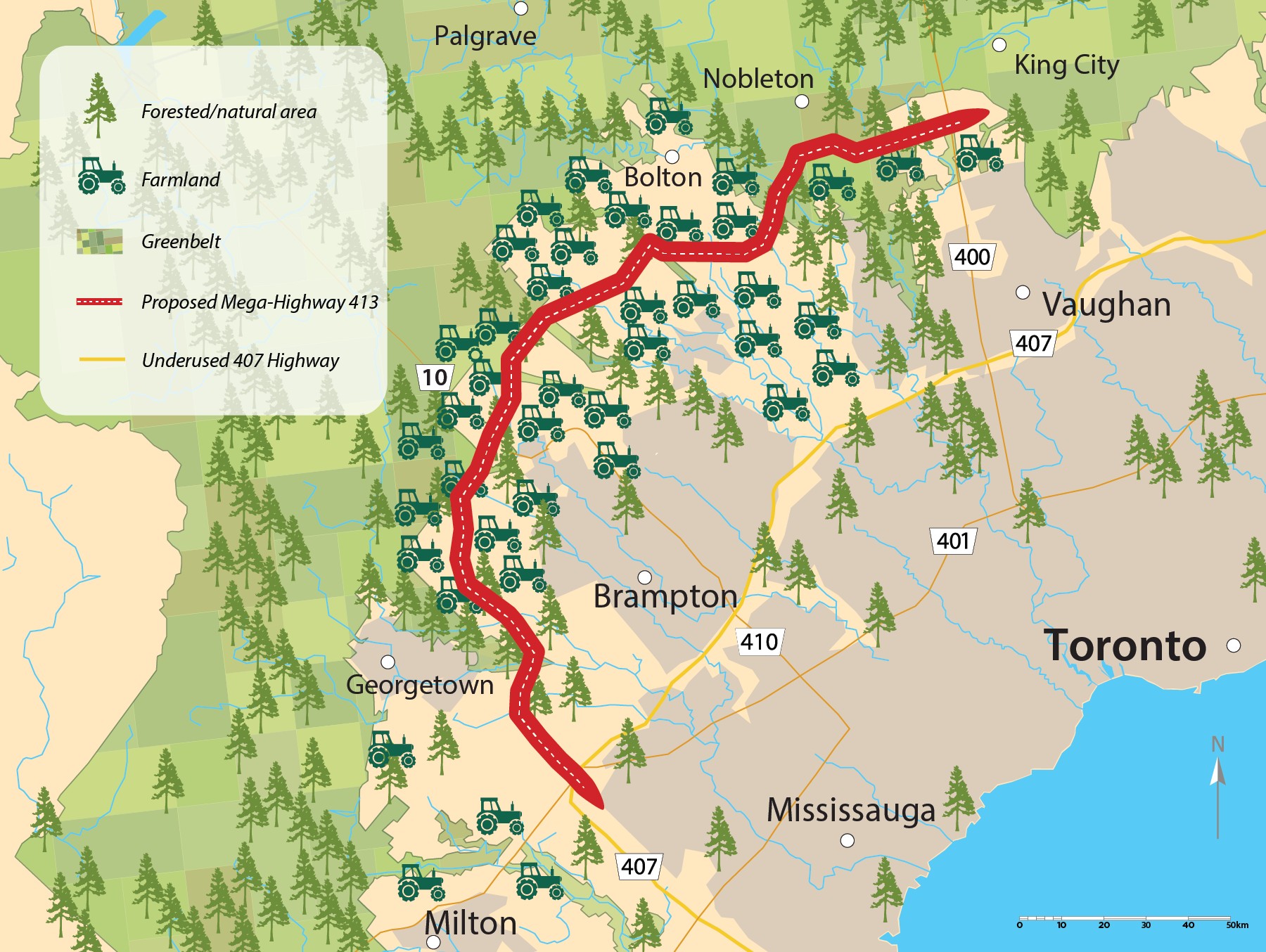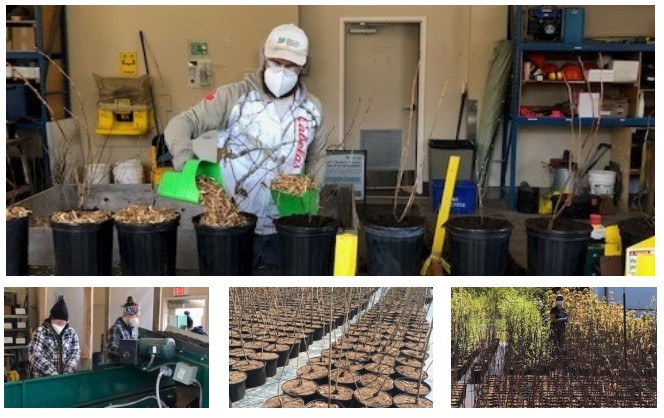
The value of nature has never been more evident, but keeping cities green has been a challenge
The spread of the novel coronavirus has reminded people about the importance of things they may have taken for granted in a pre-pandemic world.
The birds singing at the feeder in their backyard, the whisper of wind through their neighbourhood trees, and all that comes with the green spaces right outside their doors.
While conversations on the significance of city green space and “green infrastructure” were being carried out prior to COVID-19, albeit without much public attention, the pandemic has brought these discussions to the forefront. As quarantine restrictions began to ease, reservations for Ontario Parks campgrounds quickly filled and residents flocked - often without regard to physical distancing restrictions - to outdoor spaces.

The COVID-19 pandemic has created financial uncertainty for many conservation authorities who are responsible for maintaining and monitoring watercourses and greenspaces across Peel.
According to Deborah Martin-Downs, the chief administrative officer for the Credit Valley Conservation Authority (CVC), since reopening Island Lake Conservation Area, Ken Whillans Resource Management Area, and Terra Cotta Conservation Area, 6,400 people are visiting the sites on average each weekend. The surge in demand has caused many of these places to reach capacity and create lineups of people waiting in their cars for time in nature.
The significance of opening parks and trails to residents has been backed with speeches by many, including Dr. Lawrence Loh, the region’s chief health officer, and Brampton Mayor Patrick Brown, on how it can improve mental health, especially after residents were cooped up indoors in an effort to slow the spread of the novel coronavirus.
While political leaders will pontificate about the importance of preserving our natural ecosystems, when it comes down to supporting those who preserve these valuable spaces, the voices fall quiet.
In a presentation to regional council last week, the prospects for CVC’s 2021, 2022 and 2023 revised financial forecast were uncharacteristically empty, with COVID-19 eliminating any certainty about future funding for the organization that preserves, manages and maintains vast swaths of greenspace across Peel.
While the Credit Valley Conservation Authority hopes funding from other levels of government will remain stable in the years ahead, nothing is certain as the world slowly moves out of the first wave of the COVID-19 pandemic.
“We're still working through our budgets at this time, so we are reluctant to provide anything,” Martin-Downs said.
While COVID-19 has created a fog of confusion around future budgets and the Region of Peel’s contribution - the region provided $28.5 million from its operating budget and $16 million from utility revenues to three conservation authorities in 2020 - it also pressed pause on a variety of environmental monitoring activities, such as field visits to sensitive natural areas and a majority of construction projects, CVC told The Pointer.
Causing further confusion for conservation authorities are the proposed changes to the Conservation Authorities Act by the provincial government. The changes stem from the province’s housing plan, More Homes, More Choice Act, which has the potential to shift the core mandate of these organization. To date, the regulations that will lay out these core responsibilities have yet to be released by the province, creating uncertainty as to what conservation authorities should actually be budgeting for.
“That will dictate what can be in levy and what they will need to negotiate agreements for,” Martin-Downs said, noting changes to the Act could impact what functions are funded by the province and what will need to be funded through the region. It’s not clear when these changes will be seen. She expects the $95,606 in funds the provincial government already allocated for 2021 to be received in full and is not anticipating further reductions at this time.
A spokesperson for the Ministry of Environment, Conservation and Parks told The Pointer the changes will allow conservation authorities to work in a “more transparent and open way with municipalities,” allowing people to understand how public funds are used.
“We are exploring opportunities to further define the core mandate of conservation authorities and the programs and services they provide, to ensure that they are best serving the interests of the people of Ontario. Our aim is to improve governance, oversight and accountability of conservation authorities while respecting taxpayer dollars,” the spokesperson said. Questions on when the regulations will come to fruition were not answered.
“I think now, more than ever, people appreciate our conservation areas,” said Mississauga Councillor Karen Ras, chair of the CVC board. “We need to continue to build and protect our natural environment so we can have both urban growth and places to go and relax and unwind in greenspace.”
It was a sentiment shared by many around the regional council table during Thursday’s meeting, but not one mirrored in past actions. For example, those on regional council have failed to speak out against the GTA West Highway, a project scrapped by the former Liberal government and restarted by the PCs last year which could have disastrous impacts on Peel’s greenspaces and local animals, many of them threatened or endangered.
Currently, the preferred route for the GTA West Highway sees the corridor running west from Vaughan through Caledon, then arcing south-west, skirting the edge of Brampton on its way toward the 401/407 between Mississauga and Milton. This path will take the highway on or near the edge of the provincially protected Greenbelt and the Oak Ridges Moraine. The wide swath of pavement will fragment much of Peel’s natural greenspaces, which could have incredibly harmful impacts for local wildlife and watercourses.

The GTA West Highway will fragment large swaths of critical habitat in the GTA, much of it relied upon by endangered and threatened species.
Despite declaring a climate emergency, something the city of Brampton has done as well, something that should place extra significance on making green, environmentally friendly decisions, regional council has failed to speak out against this project.
The potential impact on funding and the shakeup of responsibilities for conservation authorities is particularly concerning for municipalities who rely on these organizations for key environmental functions. Flood mitigation, environmental planning and monitoring, ensuring sustainable development practices and mitigating the effects of climate change have all fallen to conservation authorities, and without them, cities will be left on their own to fulfill many of the ambitious goals laid out in their environmental planning documents.
In Brampton, the 2040 Vision emphasises the concept of “one-planet living,” with “carbon neutrality, zero waste, and energy resilience,” something many of the core programs at CVC and the Toronto Region Conservation Authority (TRCA) support. Brampton also has a tree planting initiative to help its canopy not only recover from natural disasters and invasive species, but also flourish in the future. Thousands of trees have been destroyed by the 2013 ice storm and the ongoing presence of an invasive beetle species called the Emerald Ash Borer. In 2019, 5,000 trees were planted by the city and in 2018, the number sat at 4,668.
Both Mississauga and Brampton have initiatives to plant one million trees, with the goal of completing this by 2032 for Mississauga and 2040 in Brampton. So far, Mississauga has planted 380,657 trees since it initiated the plan. All of these goals receive significant support from local conservation authorities.
During COVID-19, CVC has continued to operate its Warwick Nursery, where a large portion of the trees to be planted across the CVC watershed over the coming year are seeded and nurtured.
“One of the early additions to the essential workplaces was those that produce plants, which allowed our Warwick Nursery to continue to take care of the plants that we had over-wintered and to carry out potting for the next year's stock” Martin-Downs said.

The Credit Valley Conservation Authority was able to maintain planting efforts at its Warwick Nursery during the pandemic, allowing crucial tree planting efforts to continue for the rest of the year.
This allowed them to plant 40,000 trees and shrubs which will form the planting stock for the next two years.
The ability to continue seeding these trees helped CVC avoid what could have been a disastrous hit by COVID-19 to its planting goals, Martin-Downs said during the presentation.
The CVC continued to face challenges when it came to opening up their parks, including access to proper personal protective equipment for staff and a rush of visitors. In response, it created a specific framework to address the issues.
“CVC developed a three-phase framework for reopening parks with robust protocols for staff and visitor safety to ensure people can enjoy their time in nature. In addition to staff donning the required PPE to operate safely, we have increased and instituted a phased reopening of park facilities such as washrooms and rental shops,” the organization told The Pointer.
The partial essential workplace status also benefited the TRCA, John MacKenzie, the chief administrative officer, told regional council last week. It worked on flood and erosion hazard mitigation projects to prevent high water levels the organization was expecting from Lake Ontario this year.
But COVID-19 also presented challenges, including hampering the TRCA’s plan to build a 160-kilometer trail in partnership with municipalities.
“In the context of COVID-19, impacts to our operations relating to the management of trails and greenspaces have included adding additional enforcement staff to ensure compliance with provincial directives during the COVID-19 pandemic,” TRCA staff told The Pointer.
But both organizations have stressed financial assistance is needed to ensure more work gets done.
Stimulus packages are being worked on by the federal government, but no details are available at this time.
“We've been lobbying hard to ensure some of those dollars flow our way” Martin-Downs said.
The TRCA has also pushed the federal government for assistance with the board of directors actively seeking support.
“One of the things that we've been advocating for is ensuring that in those programs that are introduced, that the municipal component isn't as significant as it has been,” Caledon Councilor Jennifer Innis, and chair of TRCA board of directors, said at the meeting.
This includes the federal government’s Disaster Mitigation and Adaptation Fund (DMAF), which requires municipalities to match the funds by 60 percent, something Innis described as “impossible” as municipalities grapple with the financial fallout from COVID-19. By the new year, the City of Brampton projected to lose almost $55 million if strict measures remained. In Mississauga, that figure sat at $100 million. If the pandemic were to continue till the end of August, the Region estimated at the April 23 Regional Council meeting, it will face a near $20 million deficit.
The request is outlined in a letter sent to the Minister of Infrastructure and Communities, Catherine McKenna. It highlighted multiple projects that are shovel ready, such as the Urban Flood Infrastructure Rehabilitation Project, which includes work to the Claireville Dam in Brampton, but lacked matching municipal funds.
“TRCA’s CEO and Board Chair, along with our municipal partners, continue to liaise with senior levels of government which includes meetings and briefings with MPs and MPPs. TRCA staff are also working with our municipal partners to review and respond to any federal and provincial grant opportunities to advance priority projects,” TRCA staff told The Pointer.
Staff and Regional Council Chair Nando Iannicca echoed the idea stated by many in the meeting, that the funding model does not work. He tabled the idea of the two conservation authorities working together to communicate the importance of such support from higher levels of government.
“With regards to COVID and even independent of COVID, this thing was kind of, I won't say broken, but limping along beforehand. Nice to stake out that position before we get to the new normal,” Iannicca said.
Email: [email protected]
Twitter: @nida_zafar
Tel: 416 890-7643
COVID-19 is impacting all Canadians. At a time when vital public information is needed by everyone, The Pointer has taken down our paywall on all stories relating to the pandemic and those of public interest to ensure every resident of Brampton and Mississauga has access to the facts. For those who are able, we encourage you to consider a subscription. This will help us report on important public interest issues the community needs to know about now more than ever. You can register for a 30-day free trial HERE. Thereafter, The Pointer will charge $10 a month and you can cancel any time right on the website. Thank you.
Submit a correction about this story


